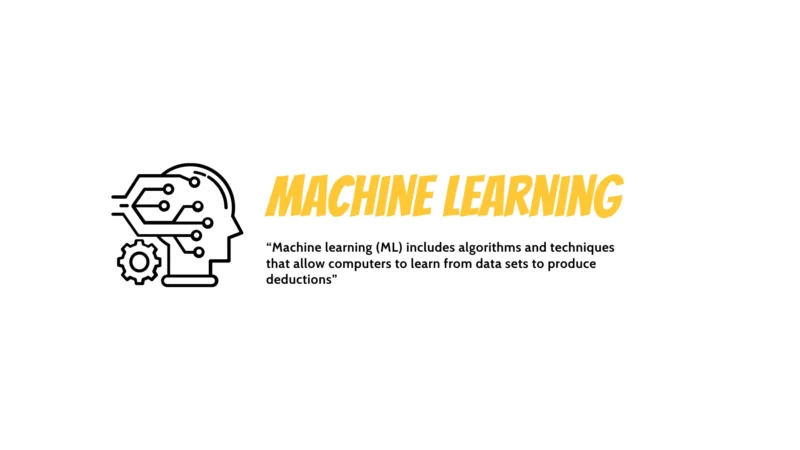Greetings, fellow Nawala! May you always be in good health.
This is the IAES Nawala from the Institute of Advanced Engineering and Science. Today, we will share news about the role of machine learning. It has been mentioned in the previous post, that machine learning (ML) includes algorithms and techniques that allow computers to learn from data sets to produce deductions. ML algorithms are reliable in solving human tasks, such as predicting human health conditions (from stress to heart disease), recognizing fraud, and many more. Saxena and Robila (2023) explained in their research that focused on developing an automated ML system to analyze and predict vehicle accidents in New York using their accident dataset. This research aims to create a user-friendly interface and implement a support vector machine (SVM) model to assess the probability of crashes, injuries, and fatalities across the city. By providing a city-wide perspective and not just focusing on specific road segments or regions, this research provides valuable insights for transportation experts, government policymakers, and the insurance industry by quantifying crash risk at specific locations.
Automated machine learning for analysis and prediction of vehicle crashes
Abhishek Saxena, Stefan A. Robila
This work discusses the study and development of a graphical interface and implementation of a machine learning model for vehicle traffic injury and fatality prediction for a specified date range and for a certain zip (US postal) code based on the New York City’s (NYC) vehicle crash data set. While previous studies focused on accident causes, little insight has been offered into how such data may be utilized to forecast future incidents, Studies that have historically concentrated on certain road segment types, such as highways and other streets, and a specific geographic region, this study offers a citywide review of collisions. Using cutting-edge database and networking technology, a user-friendly interface was created to display vehicle crash series. Following this, a support vector machine learning model was built to evaluate the likelihood of an accident and the consequent injuries and deaths at the zip code level for all of NYC and to better mitigate such events. Using the visualization and prediction approach, the findings show that it is efficient and accurate. Aside from transportation experts and government policymakers, the machine learning approach deliver useful insights to the insurance business since it quantifies collision risk data collected at specific places.
Further research was conducted by Mahomodally et al. (2023) which focused on using deep learning to automatically detect diseases in plants. They collected an image dataset that included 32 plants and 74 types of diseases. Their research used four pre-trained computer vision models, namely VGG-16, VGG-19, ResNet-50, and ResNet-101. Their experimental results showed that the VGG-16 and VGG-19 models were more efficient than ResNet-50 and ResNet-101.
Machine learning techniques for plant disease detection: an evaluation with a customized dataset
Amatullah Fatwimah Humairaa Mahomodally, Geerish Suddul, Sandhya Armoogum
Diseases in edible and industrial plants remains a major concern, affecting producers and consumers. The problem is further exacerbated as there are different species of plants with a wide variety of diseases that reduce the effectiveness of certain pesticides while increasing our risk of illness. A timely, accurate and automated detection of diseases can be beneficial. Our work focuses on evaluating deep learning (DL) approaches using transfer learning to automatically detect diseases in plants. To enhance the capabilities of our approach, we compiled a novel image dataset containing 87,570 records encompassing 32 different plants and 74 types of diseases. The dataset consists of leaf images from both laboratory setups and cultivation fields, making it more representative. To the best of our knowledge, no such datasets have been used for DL models. Four pre[1]trained computer vision models, namely VGG-16, VGG-19, ResNet-50, and ResNet-101 were evaluated on our dataset. Our experiments demonstrate that both VGG-16 and VGG-19 models proved more efficient, yielding an accuracy of approximately 86% and a f1-score of 87%, as compared to ResNet-50 and ResNet-101. ResNet-50 attains an accuracy and a f1-score of 46.9% and 45.6%, respectively, while ResNet-101 reaches an accuracy of 40.7% and a f1-score of 26.9%.
Chronic kidney disease (CKD) and diabetes mellitus (DM) are two chronic diseases that are a big challenge for society in general. Chitra et al. (2023) conducted a study that focused on predicting CKD using machine learning algorithms, such as logistic regression, random forest, conditional random forest, and recurrent neural networks. Using medical code data as input, the algorithm aims to identify CKD at an early stage, prevent its progression, and improve the patient’s quality of life.
Chronic kidney disease prediction model using machine learning approach
Munusamy Chitra, Abdul Kuthus Parveen, Murugadoss Elavarasi, Jayamoorthy Sangeetha, Ramalingam Vaittilingame
Chronic disease (CD) such as kidney disease and causes severe challenging issues to the people all around the world. Chronic kidney disease (CKD) and diabetes mellitus (DM) are considered in this paper. Predicting the diseases in earlier stage, gives better preventive measures to the people. Healthcare domain leads to tremendous cost savings and improved health status of the society. The main objective of this paper is to develop an algorithm to predict CKD occurrence using machine learning (ML) technique. The commonly used classification algorithms namely logistic regression (LR), random forest (RF), conditional random forest (CRF), and recurrent neural networks (RNN) are considered to predict the disease at an earlier stage. The proposed algorithm in this paper uses medical code data to predict disease at an earlier stage.
The above articles are just a small part of the research on machine learning. To get more information, readers can visit the page and read articles for FREE through the following links: https://ijict.iaescore.com/.
By: I. Busthomi

